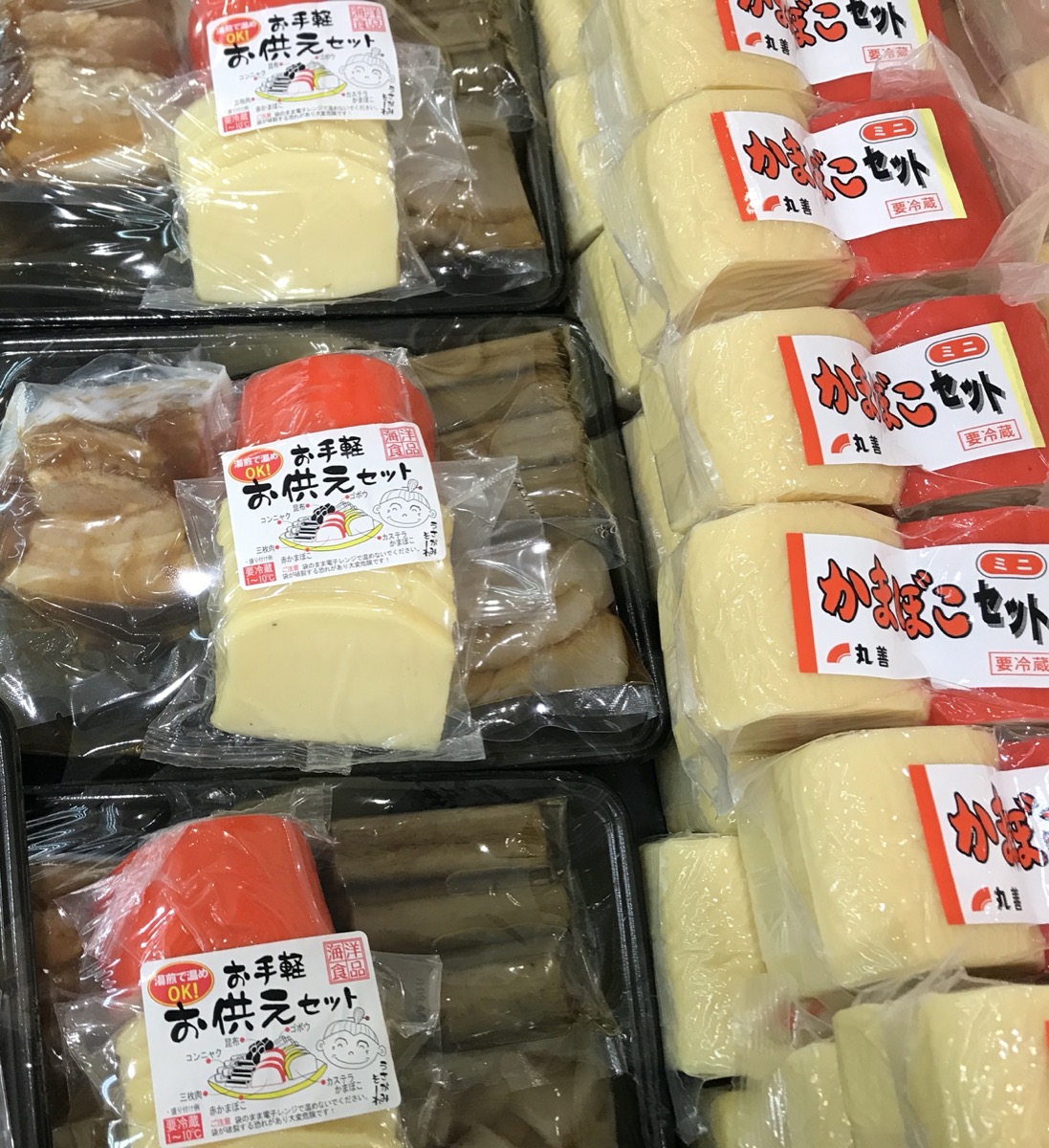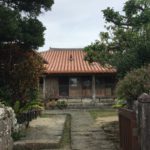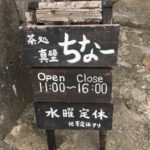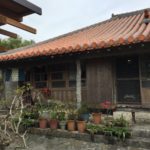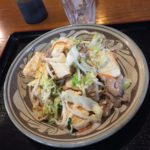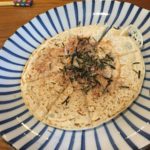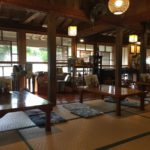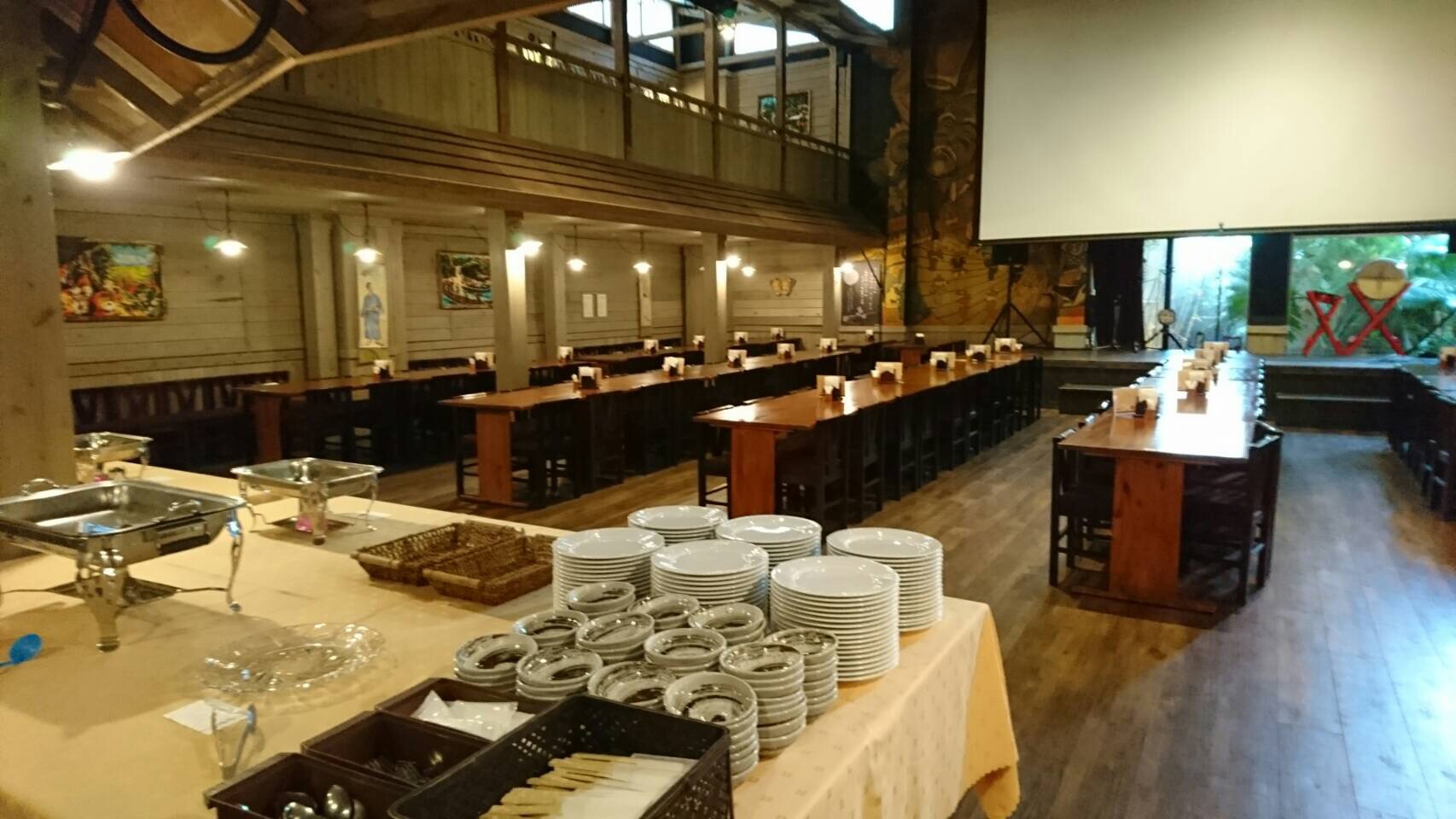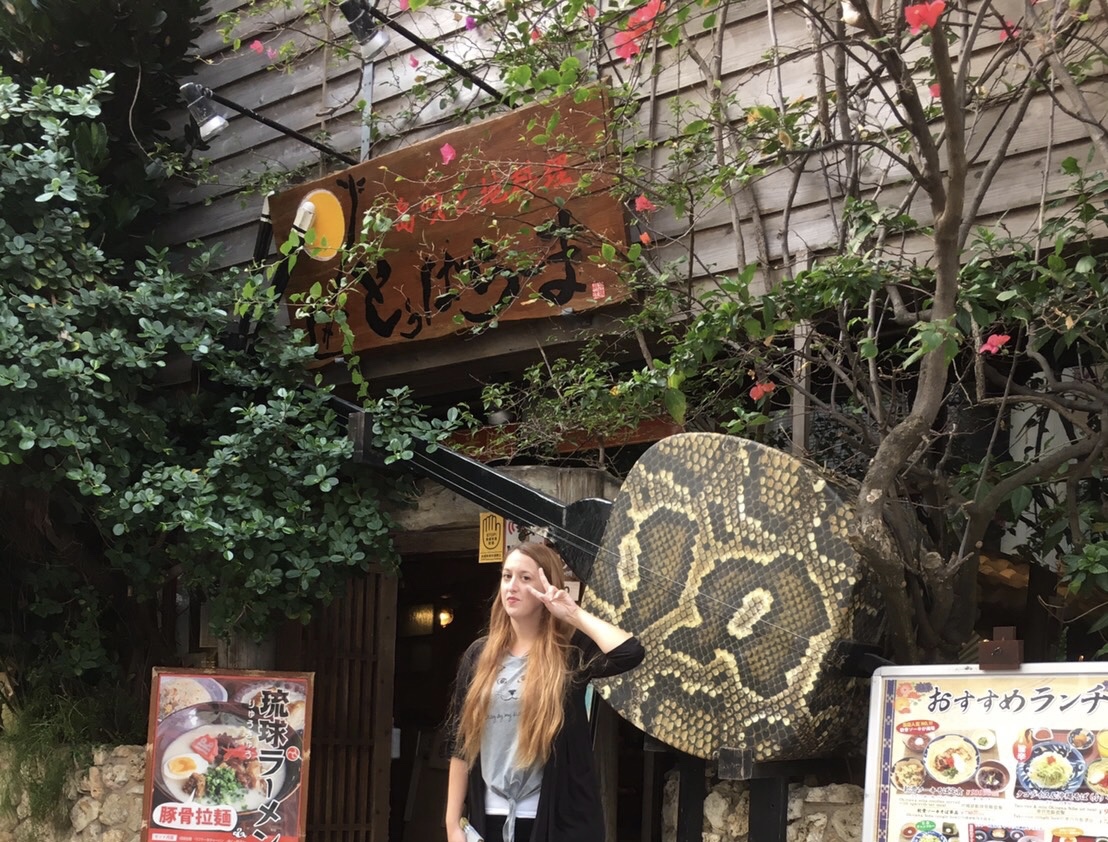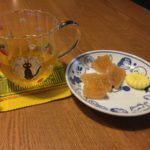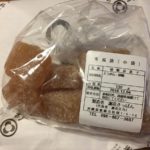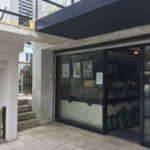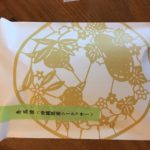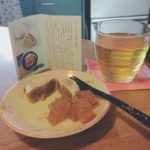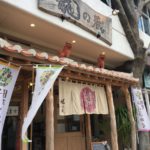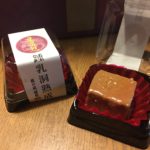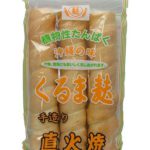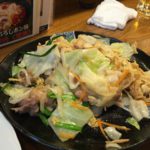ウサンミ (kanji: 御三味): usanmi.
Usanmi are Okinawan feasts typically prepared during holidays such as shiimii 清明祭 and Obon 旧盆. It is packed into lacquered multi-tiered boxes. The amount of food should be in odd numbers, usually 9. Usanmi seems to be a mixed custom, with origins in China and with Japanese influence… after all, Okinawa is a “chanpuru culture” (mixed culture).
These foods are nearly always some combination of the following, I have noted 7 items which are required, and the other 2 depend on family/region (I will slowly add pictures of each of these):
castella kamaboko カステラかまぼこ: fishcake “cake”; it is similar to “datemaki,” though datemaki is usually a more rolled shape where you can see layers. It is yellow with minced fish and eggs, resembling a castella sponge cake. Optional.
kouhaku kamaboko 紅白かまぼこ: red and white fishcake. Required!
age-doufu 揚げ豆腐: fried tofu. Required!
tenpura 天ぷら: various fried things, such as shrimp, squid, fish. Required.
konbu 昆布: kelp, boiled and tied into knots. Required
gobou ごぼう: burdock root, cut into long sticks and boiled in a broth. Required.
konnyaku こんにゃく: konjac, turned into a twisted shape and boiled. Required.
sanmainiku 豚三枚肉: boiled pork meat ribs, usually cheap and popular with Okinawans. Required.
taimo (tanmu) 田芋: taro, usually fried. Optional.
daikon nitsuke 大根煮付: boiled daikon (radish). Optional.
mochi 餅: usually just plain white rice cake is used for offerings, though if it is for eating there will usually be red bean paste (anko) inside. Mochi are put into a SEPARATE box, and not mixed with the others. This second box is required!
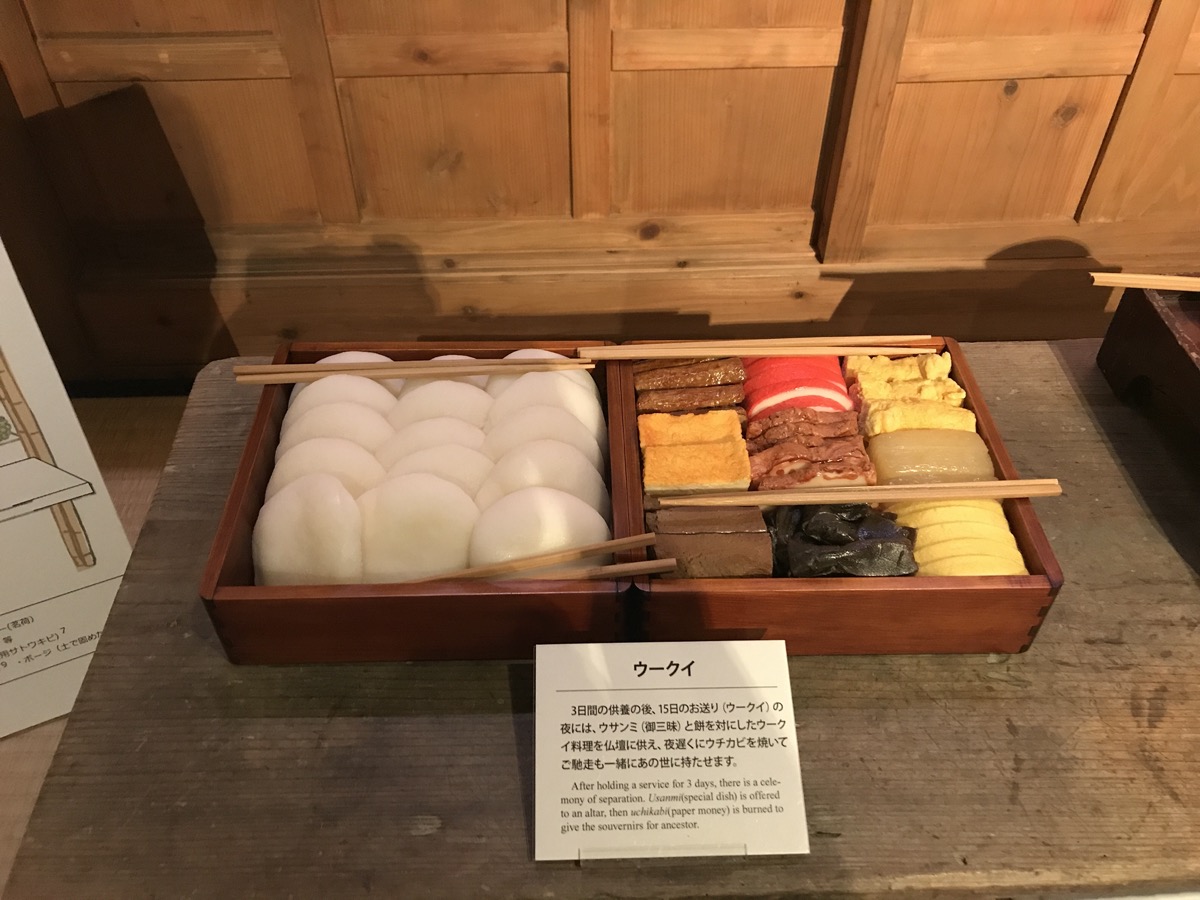
I read some recipes on how to make all of these… at some point I shall put them up for those interested in challenging to make this and become and Okinawa cuisine master.
To be traditional, you should use umeshi (special Okinawa chopsticks) to eat it.
